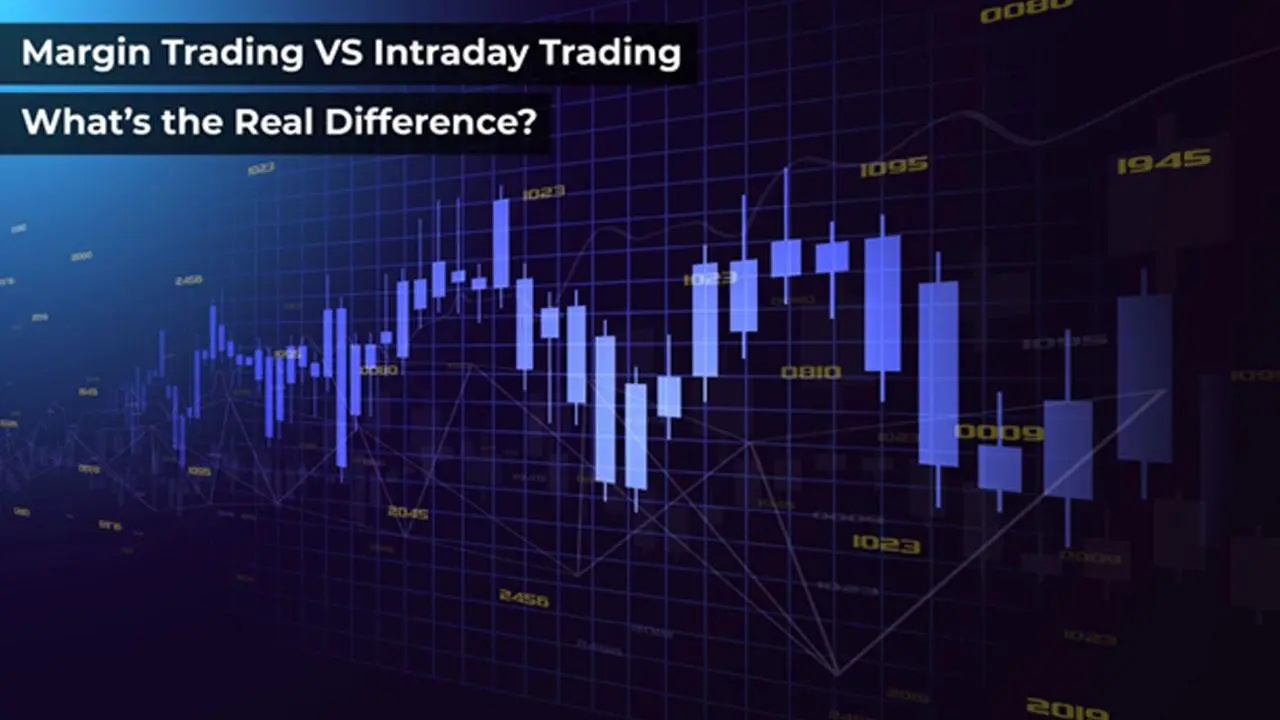Understanding these distinctions is crucial for traders looking to optimise their investments.

Margin Trading vs. Intraday Trading
The stock market offers various trading strategies, but two commonly confused ones, are margin trading and intraday trading. While both involve leveraging capital to maximise profits, they differ significantly in execution, risks, and objectives. Understanding these distinctions is crucial for traders looking to optimise their investments.
ADVERTISEMENT
Furthermore, selecting the trading platform enhances efficiency by providing real-time data, analytical tools, and seamless execution, helping traders make informed decisions and optimise their intraday trading or margin trading strategies.
Intraday Trading
Intraday trading refers to the practice of buying and selling financial instruments within the same trading day. Traders capitalise on short-term price fluctuations, aiming to profit from the volatility in stock prices. Positions are squared off before the market closes, ensuring no overnight exposure.
Key Features of Intraday Trading:
1. Short-Term Focus: Trades are executed and closed within the same day, requiring traders to monitor market movements closely, whether in stocks, ETF investments or other instruments.
2. Leverage Utilisation: Brokers often provide leverage, allowing traders to take larger positions than their capital would typically permit. This facility, known as intraday margin, enables traders to amplify potential gains. However, it's essential to understand that while leverage can enhance profits, it also increases the potential for significant losses.
3. Market Volatility: Success in intraday trading heavily depends on market volatility. Traders often rely on technical analysis, charts, and indicators to make informed decisions.
4. Risk Management: Given the rapid pace of intraday trading, effective risk management strategies, such as setting stop-loss orders, are vital to mitigate potential losses.
Margin Trading
Margin trading involves borrowing funds from a broker to purchase securities, using existing investments as collateral. This strategy allows traders to acquire more significant positions than their available capital would allow, aiming to enhance potential returns. One of the most common ways to engage in margin trading is through an MTF (Margin Trading Facility), which offers investors access to leverage and the opportunity to amplify their trading positions.
Key Features of Margin Trading:
1. Leverage Through Borrowing: Traders can buy additional securities by borrowing funds, thereby increasing their market exposure. A margin account lets you leverage securities you already own as collateral for a loan to buy additional securities.
2. Interest and Maintenance Requirements: Borrowed funds incur interest charges, and traders must maintain a minimum account balance, known as the maintenance margin. Failure to meet these requirements can result in a margin call, where the broker demands additional funds or the liquidation of assets to cover potential losses.
3. Flexibility in Holding Periods: Unlike intraday trading, margin trading doesn't necessitate closing positions within the same day. Traders can hold positions over extended periods, depending on their investment strategy and the broker's terms.
Comparative Analysis: Intraday vs. Margin Trading
Understanding the key differences between intraday trading and margin trading is essential for traders to make informed decisions. While both strategies involve leverage, their execution, risks, and capital requirements differ significantly.
Duration of Trades
One of the primary distinctions lies in the trade duration. Intraday trading requires traders to open and close their positions within the same trading day. This means that all transactions must be squared off before the market closes, eliminating overnight exposure.
On the other hand, margin trading allows traders to hold positions for extended periods, depending on their investment strategy and the broker’s margin requirements. Unlike intraday trading, margin traders are not restricted to closing their positions within a day, giving them the flexibility to capitalise on long-term market trends.
Leverage and Capital Requirements
Both trading styles involve leverage, but their mechanisms differ. In intraday trading, brokers provide an intraday margin, allowing the intraday trader to take larger positions with a small fraction of their actual capital. This enables them to magnify potential gains but also increases the risk of amplified losses.
In margin trading, leverage is obtained by borrowing funds from a broker against existing securities. However, borrowed funds incur interest, making cost management an essential aspect of margin trading. Traders must ensure they maintain adequate capital in their accounts to avoid margin calls.
Risk Exposure
Intraday trading is heavily influenced by daily market fluctuations. While traders must navigate price volatility, they avoid overnight risks since positions are closed by day-end. Margin trading, however, exposes traders to risks associated with holding positions for extended periods. Sudden market downturns can lead to margin calls, where traders must either deposit additional funds or liquidate assets to cover losses. Additionally, the interest on borrowed funds adds to the financial burden, making margin trading riskier for those who do not actively manage their positions.
Choosing the Right Strategy
The decision between intraday and margin trading depends on individual risk tolerance, market knowledge, and investment objectives. For those exploring how to start trading, assessing personal financial goals and risk appetite can help in selecting the most suitable approach.
- For Active Traders: Those who can dedicate time to monitor markets closely and have a high-risk tolerance may find intraday trading suitable, given its potential for quick profits.
- For Investors Seeking Leverage: Individuals looking to enhance their purchasing power over a more extended period might consider margin trading, keeping in mind the associated interest costs and risks.
Conclusion
Understanding the distinctions between intraday and margin trading is essential for traders aiming to navigate the stock market effectively. By aligning trading strategies with individual goals and risk appetites and by leveraging the right tools, traders can enhance their potential for success while mitigating inherent risks.
Whether you prefer intraday trading for quick market moves or margin trading for long-term positions, having the right platform is essential. A trusted stock market app, provides the tools and insights needed to trade efficiently. Stay ahead in the market—explore your trading options with confidence today!
 Subscribe today by clicking the link and stay updated with the latest news!" Click here!
Subscribe today by clicking the link and stay updated with the latest news!" Click here!












